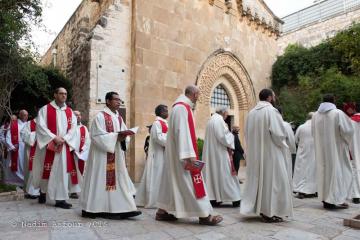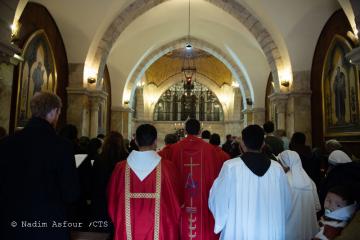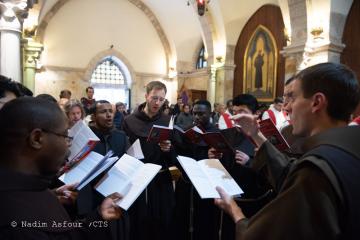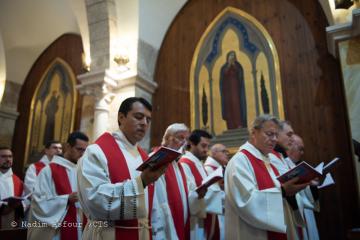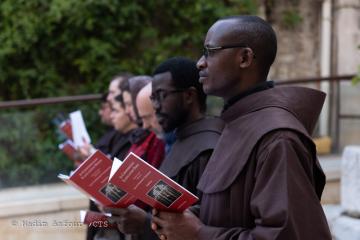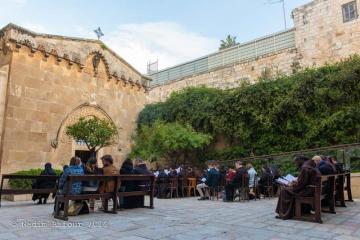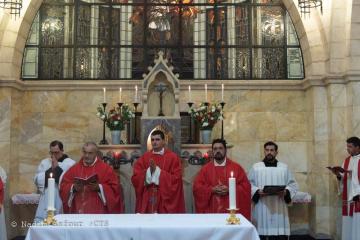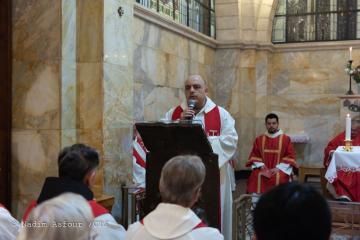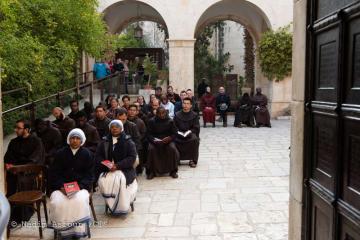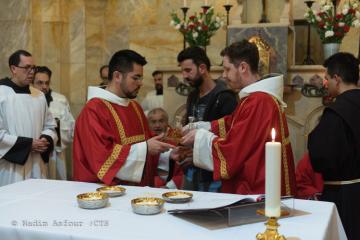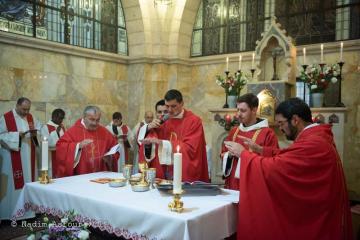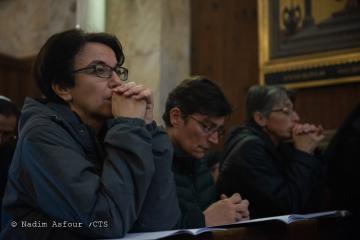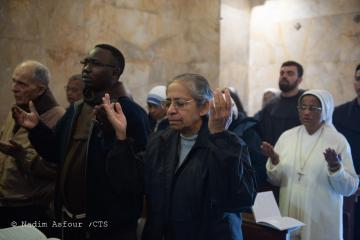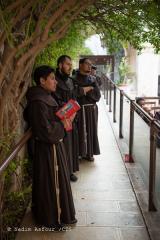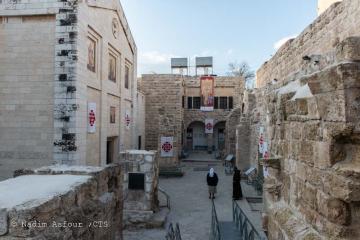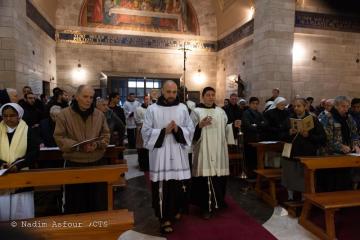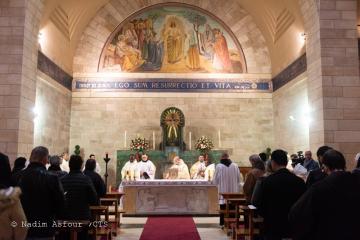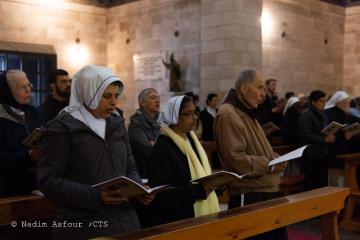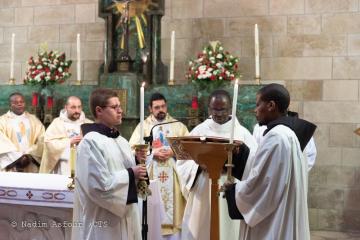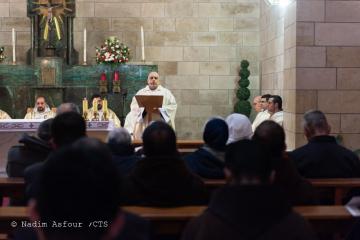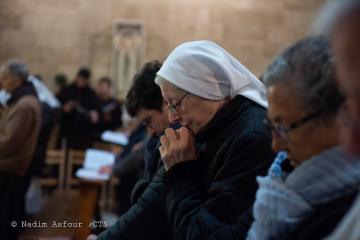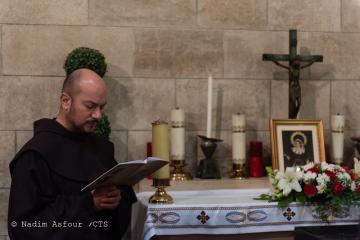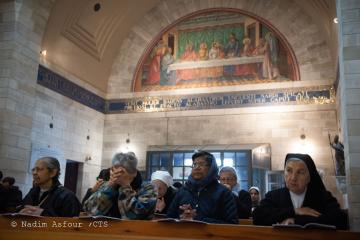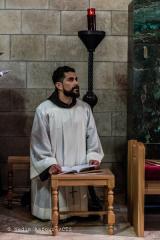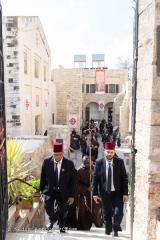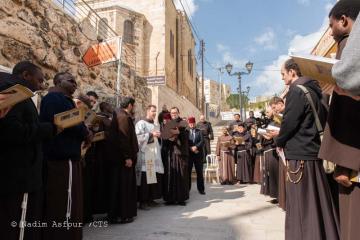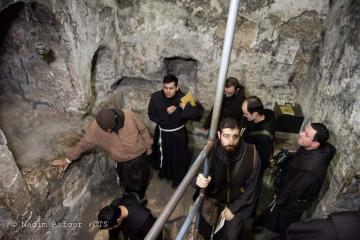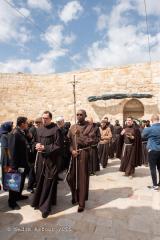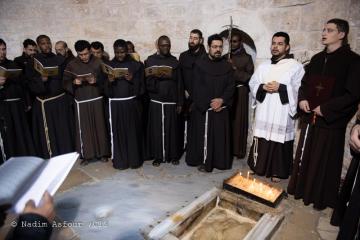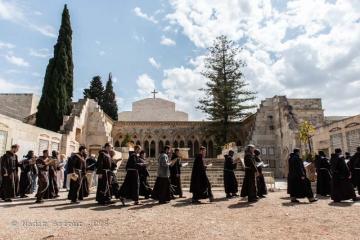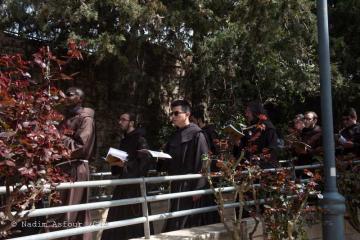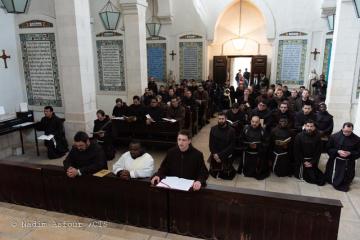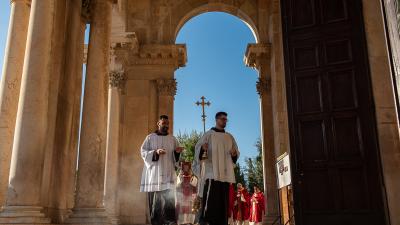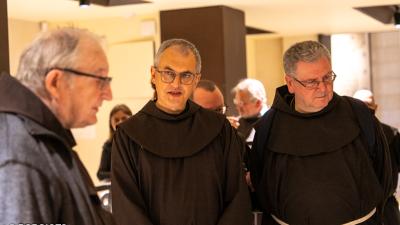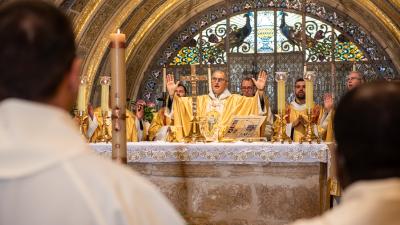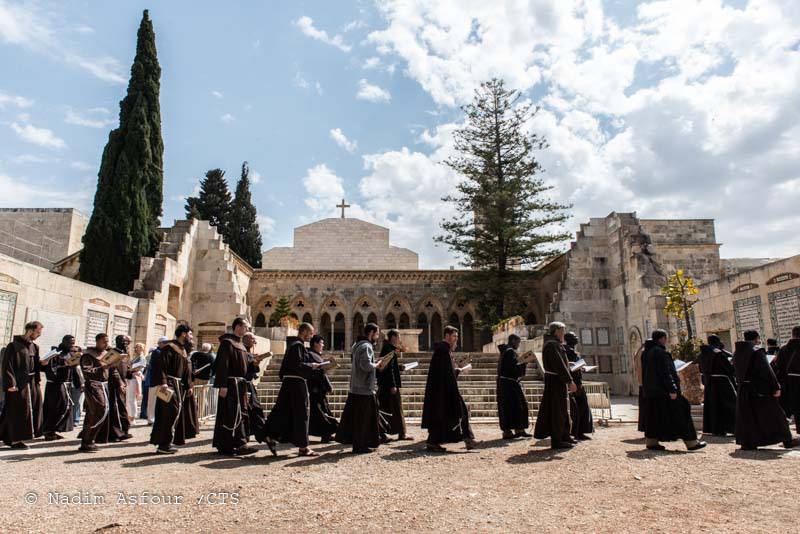
The third Wednesday of Lenten peregrinations opens at the Church of the Flagellation, on the Via Dolorosa, to end, on the following days, with the traditional votive peregrinations to Bethany, to the Chapel of the Ascension and the Church of Pater Noster.
Packed for the event, the small Church of the Flagellation was at the centre of the celebration on Wednesday 3rd April. The Church, which stands on the site of the Antonia Fortress, has its origins in the one built by the Crusaders in the 12th century and abandoned for many hundreds of years. Its ruins were purchased by the Franciscans in 1838 and, thanks to the generosity of Maximilian of Bavaria, reopened for worship. The architect Antonio Barluzzi restored it in 1929, keeping the previous medieval style. The windows, which illustrate the judgement by Pilate, the flagellation of Jesus and the liberation of Barabbas, help enter the mystery celebrated this week."Jesus asks us to take a position,” said the Bursar of the Custody, Fr. Ramzi Sidawi during the homily. "Like Jesus, we have to make our choices and we ask him for the courage to make them and conclude them in our lifetime."
On Thursday 4th April, as tradition has it, in the 4th week of Lent, a delegation of friars from the Custody and some pilgrims and local faithful went to the town of Bethany, to the Church standing near the tomb of Lazarus. The architect Antonio Barluzzi also built this church between 1952 and 1953, on top of the archaeological excavations carried out in 1949. "These peregrinations make us relive the Mystery that we read about in the Gospel," commented Fr. Ramzi "and the Gospel is the Word of Life for today, it is not the Word of the past. Therefore today we live, relive and draw on these places, on this mystery, for our lives."
The peregrination then continued to the Chapel of the Ascension and the Church of Pater Noster, where the faithful listened to the Gospel of the place, read by two Franciscan deacons.
Giovanni Malaspina


